Sheldon PintoMar 18, 2019 17:00:19 IST
I recently reviewed the Samsung Galaxy S10 Plus and despite featuring a new display, a bigger battery and fancy new charging tech, it’s the camera that let it down, but only slightly.
It did make for a good flagship overall, as there were plenty of improvements to make it an attractive offering in 2019.
Whether it will remain a good deal till the end of the year is something entirely dependent on offerings from Sony, LG, Nokia and the lot, when they launch their 2019 Snapdragon 855-packing smartphones in India. That 855, by the way, is said to be more powerful than Samsung's Exynos chip.
And since Samsung was the first of many brands to launch a flagship device this year, it also gets the privilege to be compared to last year’s smartphone flagships.

The Samsung Galaxy S10 Plus's camera did not perform as expected in my review. Image: Tech2/ Omkar Patne
While I reviewed the Galaxy S10 Plus as a standalone device, it’s now time to stack it up against last year’s premium flagships.
Since the Galaxy S10 Plus is priced at Rs 73,900, I decided to include the Google Pixel 3 XL (Rs 83,000), the Apple iPhone XR (Rs 70,500) and the Huawei Mate 20 Pro (Rs 69,990) in the roundup. The results were pretty much as expected.
Samsung’s camera does fall a bit behind the competition, but not all of it. The device’s cons include the fact that low-light performance is a bit shabby compared to the competition. And while the photos aren't the best I've seen, its daylight video abilities are quite admirable.
But how does it stack up against last year’s premium flagships and where does it rank? Let’s find out!
https://dailymotion.com/video/x73nmv5
I decided to start my test at Mumbai’s Marine Drive, which is not as crowded on a weekday as it is on weekends.
Heading out at around 4.30 pm I wanted to catch the golden hour and since the downtown office crowds were heading in the opposite direction, the locals were empty and I stepped off the train at Churchgate Station and made it in time, well before sunset.
There was still plenty of light around, so I first clicked a couple of photographs of the scene ahead of me, which was of the bay with the sun on its way down.
Landscapes: Tie
Out of the four smartphones, the Galaxy S10 Plus delivered the most saturated colours, which almost looked Instagram-ready right out of the phone. The iPhone XR was the most colour accurate and showcased great dynamic range.

L to R: iPhone XR, Pixel 3 XL, Mate 20 Pro, Galaxy S10 Plus. Image: Tech2/ Sheldon Pinto
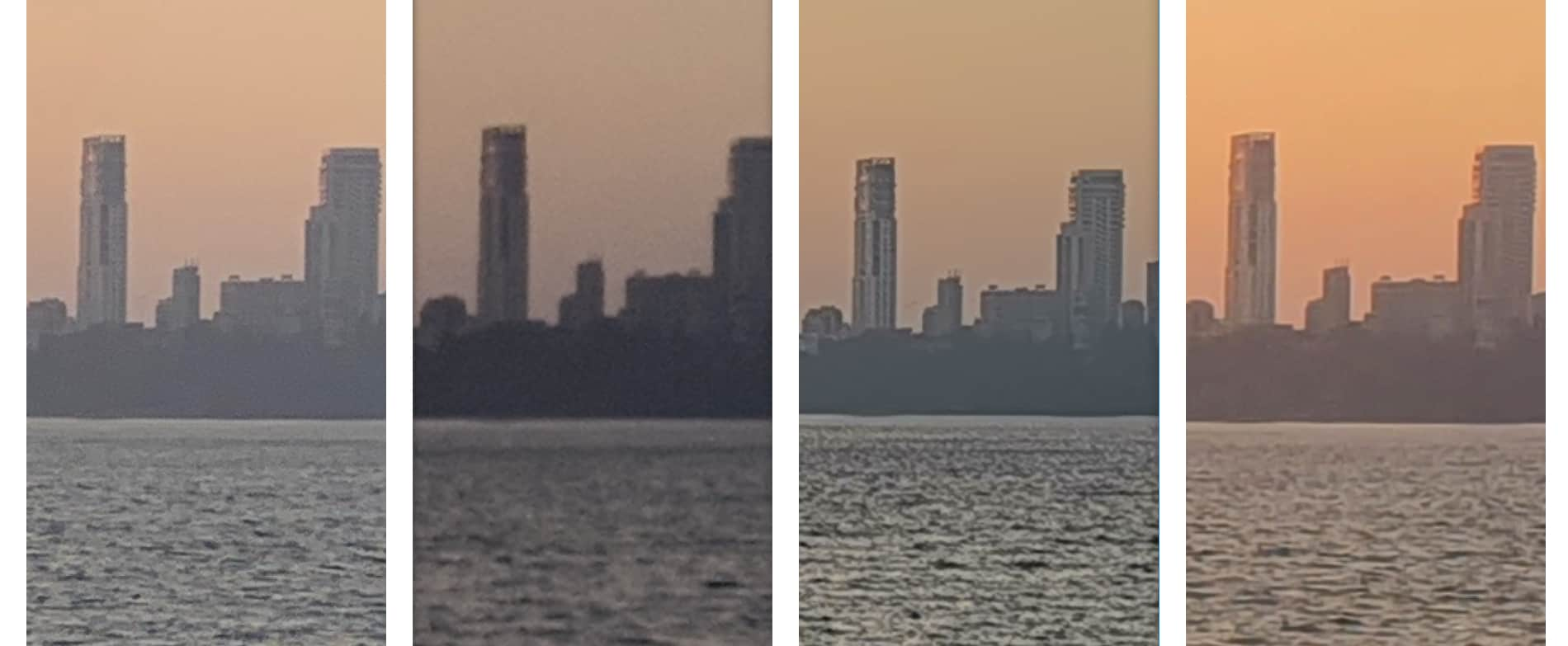
L to R: iPhone XR, Pixel 3 XL, Mate 20 Pro, Galaxy S10 Plus. Image: Tech2/ Sheldon Pinto
The Google Pixel 3 XL had some problems focussing but delivered the most contrasted image out of the three. The rocks on the seafront almost looking like blocks of charcoal, though.
The Mate 20 Pro produced the sharpest image of the lot but its aggressive noise reduction saw lesser details in the photo. To conclude, all three phones did a fine job at capturing the setting sun.
Landscape Video: Apple iPhone XR
While I was at it. I also captured a video of Marine Drive. The iPhone XR came out on top with silky smooth 1080p video @ 60 fps. The focusing was fast and the bitrate was high enough that it almost looks professional. Apple's unmatched image stabilisation also ensured that panning was buttery smooth. Adding to the breath-taking visuals that this phone can capture, there is also great stereo sound giving you the impression of actually standing right there.
The playlist below shows the videos shot using the iPhone XR, Pixel 3 XL, Mate 20 Pro and the Galaxy S10 Plus.
[youtube https://www.youtube.com/watch?v=videoseries?list=PLFZEHifMBLl5Y4mXPUbEEwDJvNu8cKxmz]
The Google Pixel, despite not having a fixed 60 fps mode, produced smooth and jitter-free video. This was followed by the Samsung Galaxy S10 Plus which despite a steady framerate could not pan smoothly thanks to a slightly troubled OIS system.
The Mate 20 Pro was not up to the mark both in terms of visual quality and audio.
Ultra Wide: Huawei Mate 20 Pro
Since I was shooting landscapes, I decided to shoot a photo using the ultra-wide-angle lens on the Galaxy S10 and the Mate 20 Pro.

L to R: Galaxy S10 Plus, Mate 20 Pro. Image: Tech2/Sheldon Pinto
Samsung’s ultra-wide angle lens combined with its software-enabled setting to reduce barrel distortion, helped the S10 get more into the frame. But it’s not a big jump from the Mate 20 Pro’s frame as you can see in the image above.
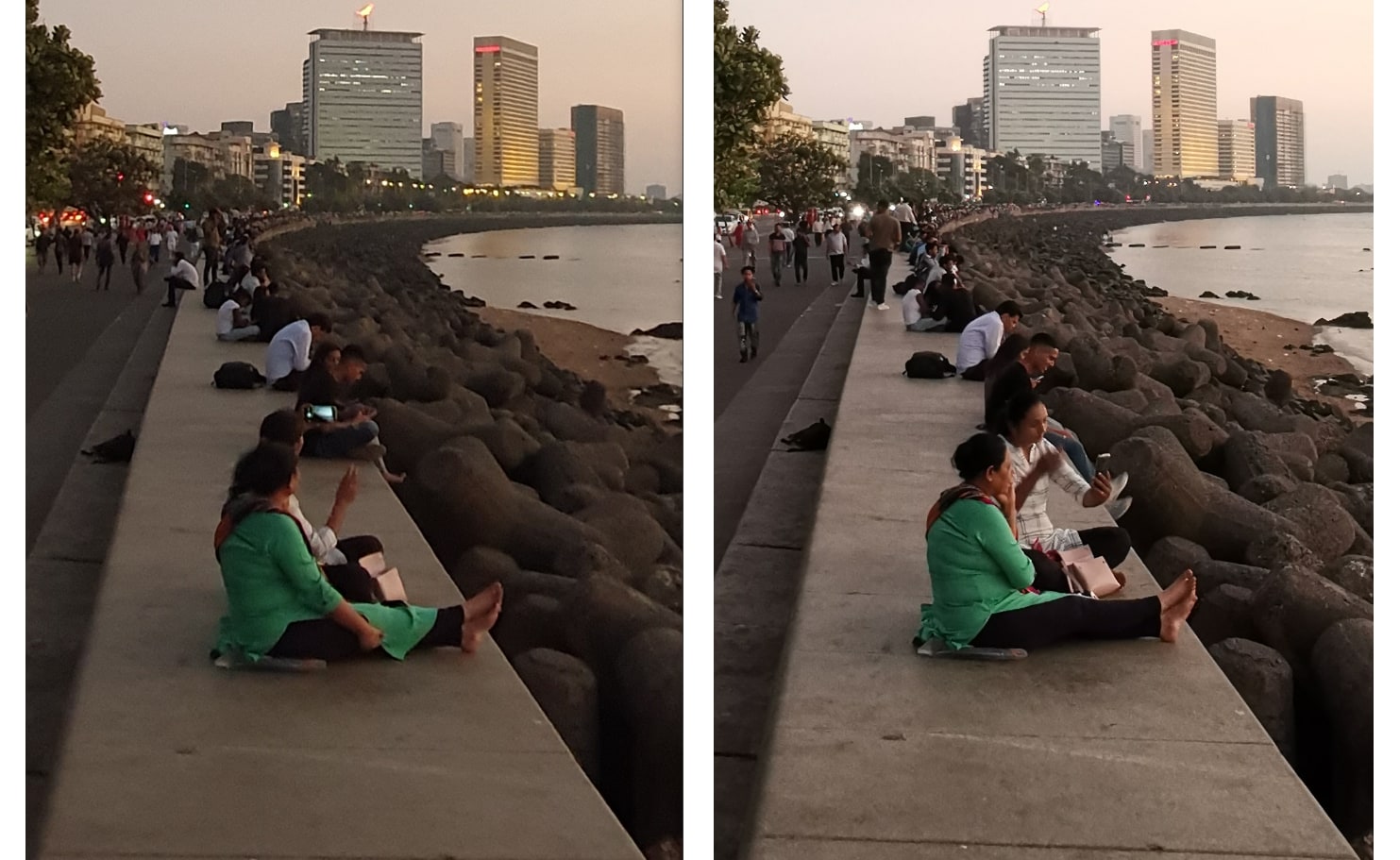
L to R: Galaxy S10 Plus, Mate 20 Pro. Image: Tech2/Sheldon Pinto
More importantly, the lack of autofocus on the S10 meant that it delivered a softer image and had plenty of areas blurred in the foreground, areas which the Mate 20 Pro got right. The Mate 20 Pro indeed gets the Ultra-wide shots a lot better than the S10 Plus or any other smartphone in this comparison.
Selfies/Portrait Mode: Google Pixel 3XL
Soon after, I switched to clicking a few selfies.

L to R: iPhone XR, Pixel 3 XL, Mate 20 Pro, Galaxy S10 Plus. Image: Tech2/ Sheldon Pinto
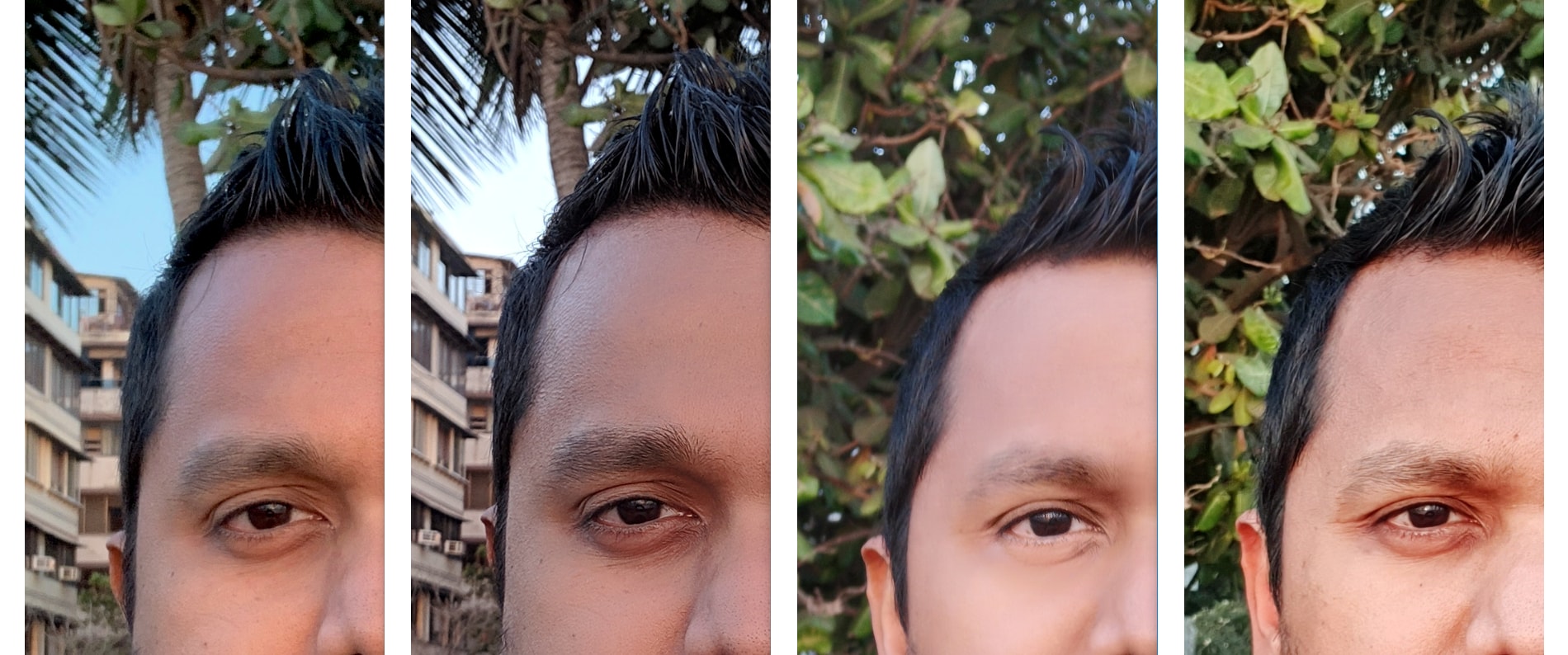
L to R: iPhone XR, Pixel 3 XL, Mate 20 Pro, Galaxy S10 Plus. Image: Tech2/ Sheldon Pinto
The Pixel 3 XL clicked the sharpest ones with the maximum amount of detail. Second in line was the Samsung Galaxy S10 Plus with slightly saturated colours and a softer image. The iPhone XR captured a sharper selfie in comparison to the S10 but went overboard with the saturation, making my face look as orange as my t-shirt. And in the last place was the Mate 20 Pro which shot the worst selfie here with minimal details and a soft overall focus.
Since I was clicking selfies, I decided to test the Portrait mode available on each smartphone.
The lighting situation was tricky. The background had the setting sun, which was quite bright and the challenge was to keep my mug in focus. More importantly, the camera had to keep my face well-exposed, while keeping the background well-exposed as well.

L to R: iPhone XR, Pixel 3 XL, Mate 20 Pro, Galaxy S10 Plus. Image: Tech2/ Sheldon Pinto
The Pixel 3 XL with all of its computational smarts pulled off the best shots even though the colours were a bit muted.
Samsung’s selfies, despite blowing out most of the details in the background, were still clearer and brighter than those on the iPhone XR. Edge detection thanks to the dual cameras on the front has improved drastically this year over the Note 9 and the Galaxy S9 and the photo showcases a nice warm tone that looks more pleasing than the severity of the Pixel shots.
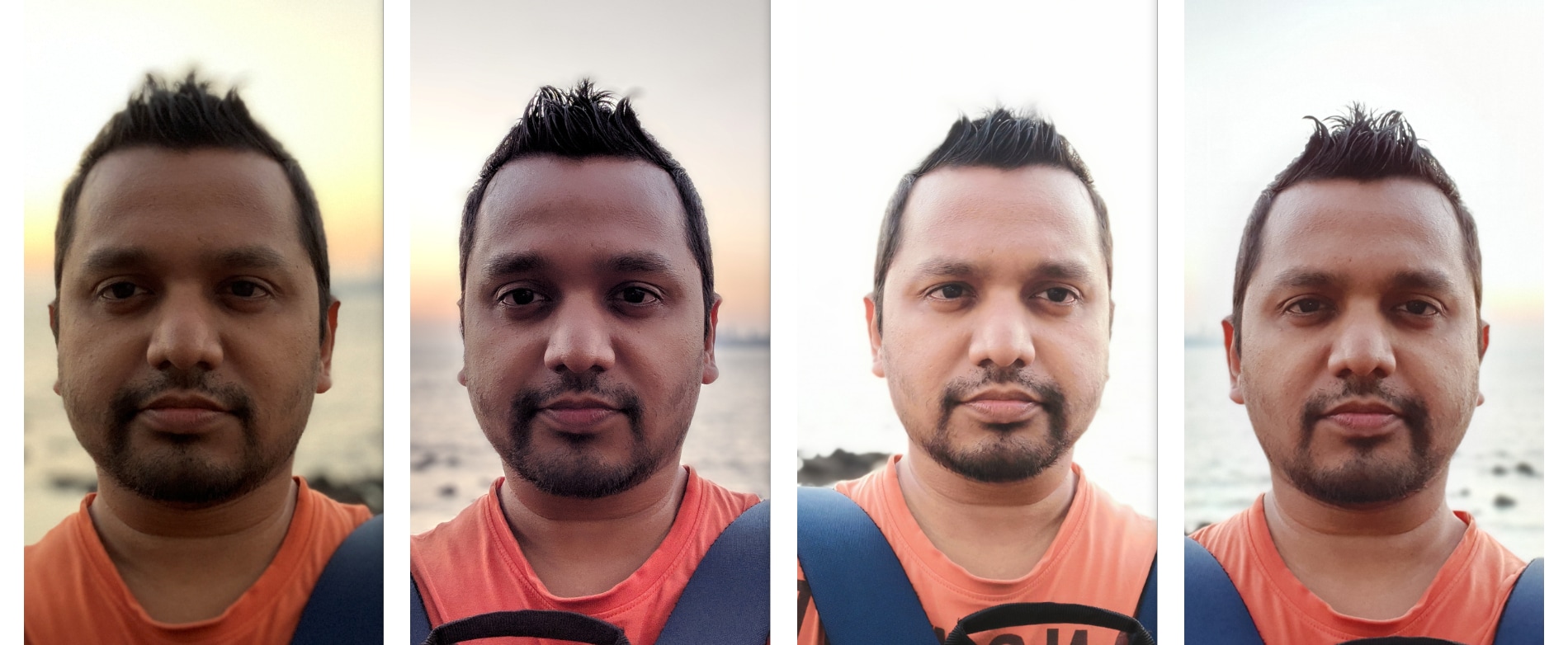
L to R: iPhone XR, Pixel 3 XL, Mate 20 Pro, Galaxy S10 Plus. Image: Tech2/ Sheldon Pinto
The next best shot came from the iPhone XR that somehow did not get the edge detection (gave me a quick haircut) as well as the S10 and Pixel did, but the colours and exposure looked more natural and warm even though the background does feature a bright spot.
The Mate 20 Pro lost and completely blew out the background despite several attempts and somehow lacked the details showcased by the other three. You really cannot tell where I’m standing in that photo.
I have said this before and I will say it once again: the Google Pixel 3 is the best smartphone when it comes to selfies and portrait images.
Selfie Video: iPhone XR
Then I tried shooting some selfie videos. Similar to the selfies in portrait mode, the iPhone XR came out on top and did a fine job of shooting smooth and jitter-free video.
The playlist below shows the videos shot using the iPhone XR, Pixel 3 XL, Mate 20 Pro and the Galaxy S10 Plus.
[youtube https://www.youtube.com/watch?v=videoseries?list=PLFZEHifMBLl7xzJcfga0jixMuyu15uQpa]
The Galaxy S10 Plus, which can record videos up to 4K, surprisingly did not do so well and I noticed plenty of noise in the shots. The Pixel produced decent video but it was nowhere close to the iPhone. Also, the video was surprisingly noisy given the evening setting. The Mate 20 Pro’s selfie video was well exposed (subject and background) but showcased way more noise than expected.
Low Light: Google Pixel 3 XL
Soon enough the sun had set and the scenery turned a bit dark (not to mention the cold breeze that made my hands shake a bit). But since this was Marine Drive, the lights came on and all those art deco buildings and swank hotels looked even grander.
I quickly pulled out the smartphones and started shooting using the available low light or night modes.
I first clicked photos in the auto mode on all smartphones and then followed them up with night mode shots, where available.

L to R: iPhone XR, Pixel 3 XL, Mate 20 Pro, Galaxy S10 Plus. Image: Tech2/ Sheldon Pinto
The iPhone XR delivered the most colour accurate photos with the Mate 20 Pro coming in second.
The Google Pixel 3 XL shot such impressive photos that I could just frame them on a wall, though it did go a bit overboard with the saturation. The Trident hotel building was more orange (like on the iPhone) than yellow (on the Pixel).

L to R: iPhone XR, Pixel 3 XL, Mate 20 Pro, Galaxy S10 Plus. Image: Tech2/ Sheldon Pinto
The Galaxy S10 also delivered a surprisingly clean shot but fell a bit shot on resolved details. The image looked a bit better than the Mate 20 Pro both in terms of detail and colour accuracy.
Quickly switching to their respective Night modes I captured the same scene again but with the night modes on.

L to R: iPhone XR, Pixel 3 XL, Mate 20 Pro, Galaxy S10 Plus. Image: Tech2/ Sheldon Pinto
The iPhone simply clicked a regular photo (there’s no special night mode), which was surprisingly sharp and detailed in comparison to the rest. The only issue was that it didn't capture as bright an image as did the Pixel 3 XL.
The Mate 20 Pro and the Samsung were neck and neck both in terms of details and colours.
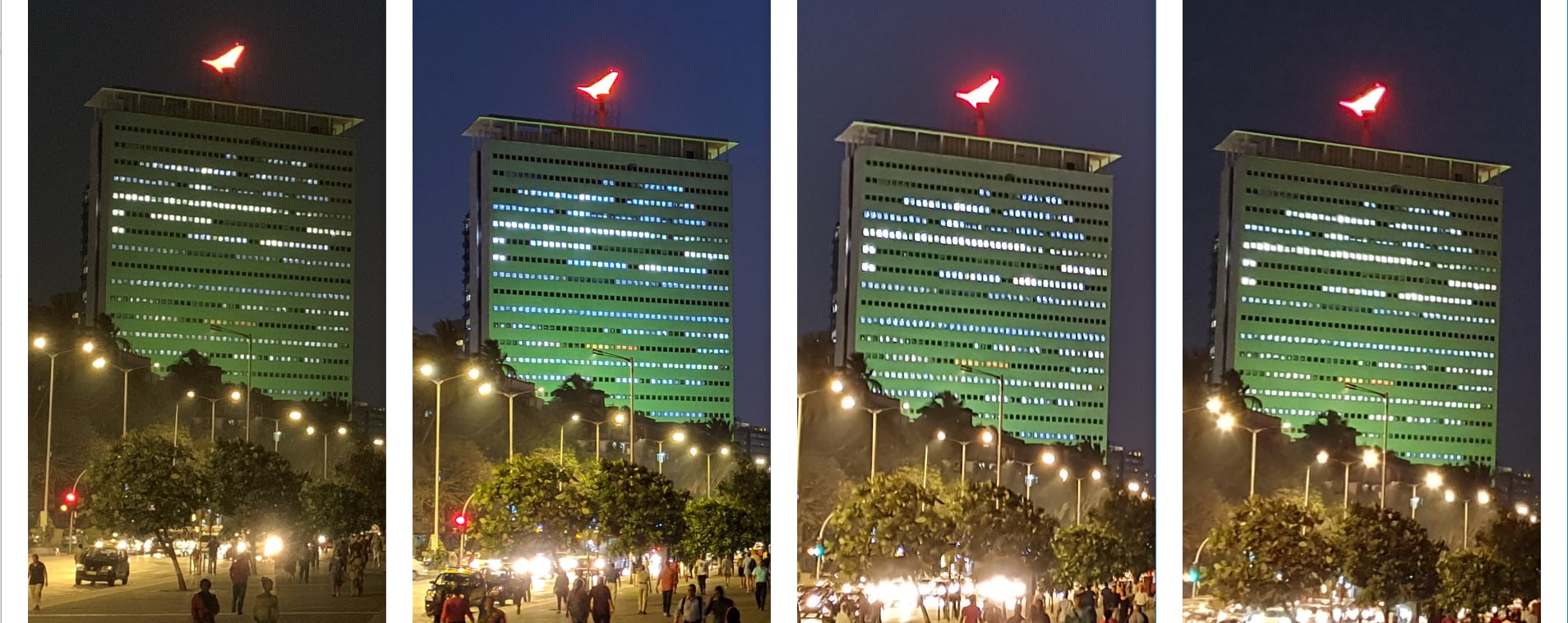
L to R: iPhone XR, Pixel 3 XL, Mate 20 Pro, Galaxy S10 Plus. Image: Tech2/ Sheldon Pinto
Indeed, this was not a true test of the night mode, which works best in darker shooting scenarios, so I began walking inwards towards the Asiatic Library.
On my way there I came across Flora Fountain and lucky for me, it was recently restored (just the fountain) and looked glorious, standing tall at Hutatma Chowk.

L to R: iPhone XR, Pixel 3 XL, Mate 20 Pro, Galaxy S10 Plus. Image: Tech2/ Sheldon Pinto
It's easy to point out from this capture how aggressive Huawei is with its noise reduction in its quest to deliver a clear image, which looks abnormally sharp in comparison to the rest.
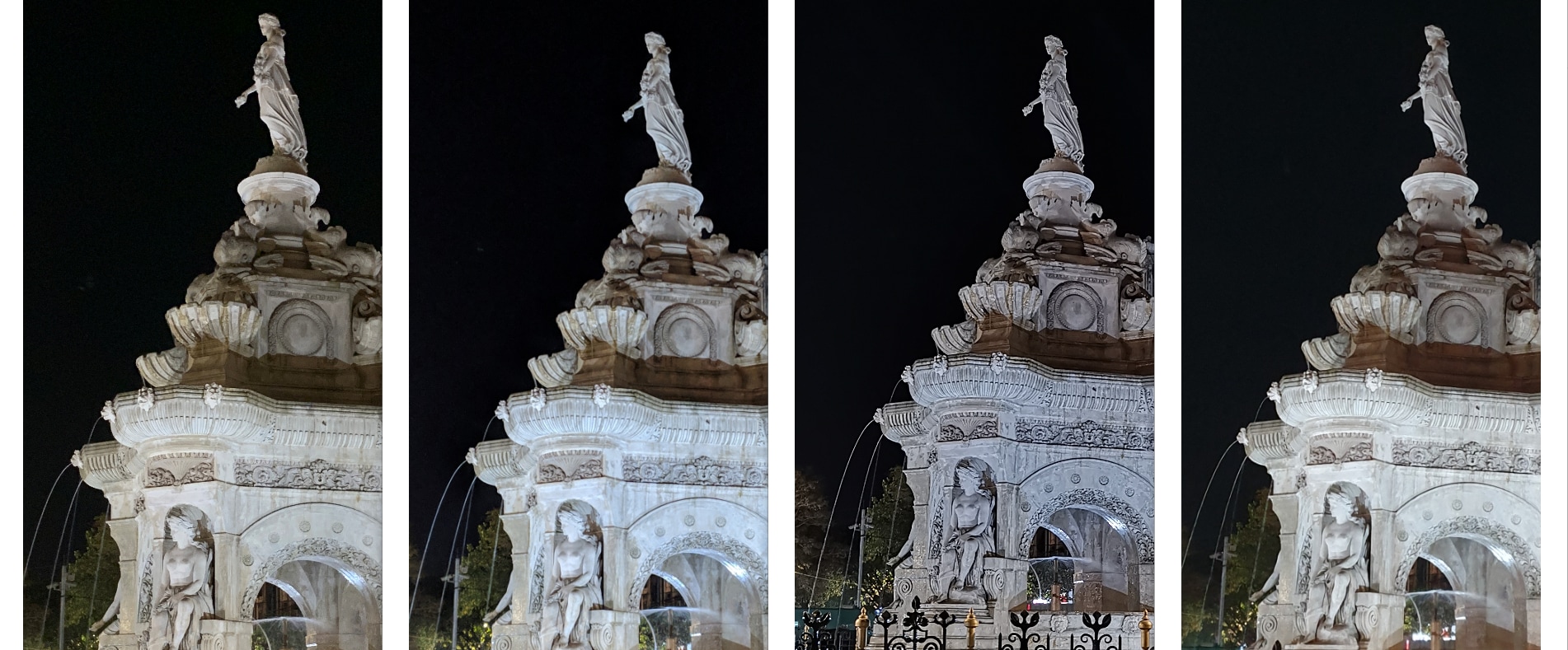
L to R: iPhone XR, Pixel 3 XL, Mate 20 Pro, Galaxy S10 Plus. Image: Tech2/ Sheldon Pinto
The iPhone XR and Google Pixel shot the best photos, maintaining sharpness even in the foreground (the mud). The Galaxy S10 Plus skipped on the details in the foreground but produced a great shot overall.
Walking further, I finally found an interesting scene to test out the night mode at Horniman circle. The building was lit only in certain areas with the top half almost blacked out so it made for an interesting test.

L to R: iPhone XR, Pixel 3 XL, Mate 20 Pro, Galaxy S10 Plus. Image: Tech2/ Sheldon Pinto
Surprisingly, the iPhone XR did a better job here than the Samsung Galaxy S10 Plus, delivering a sharper photo and more detail. And this despite not having a dedicated night mode like the other phones.
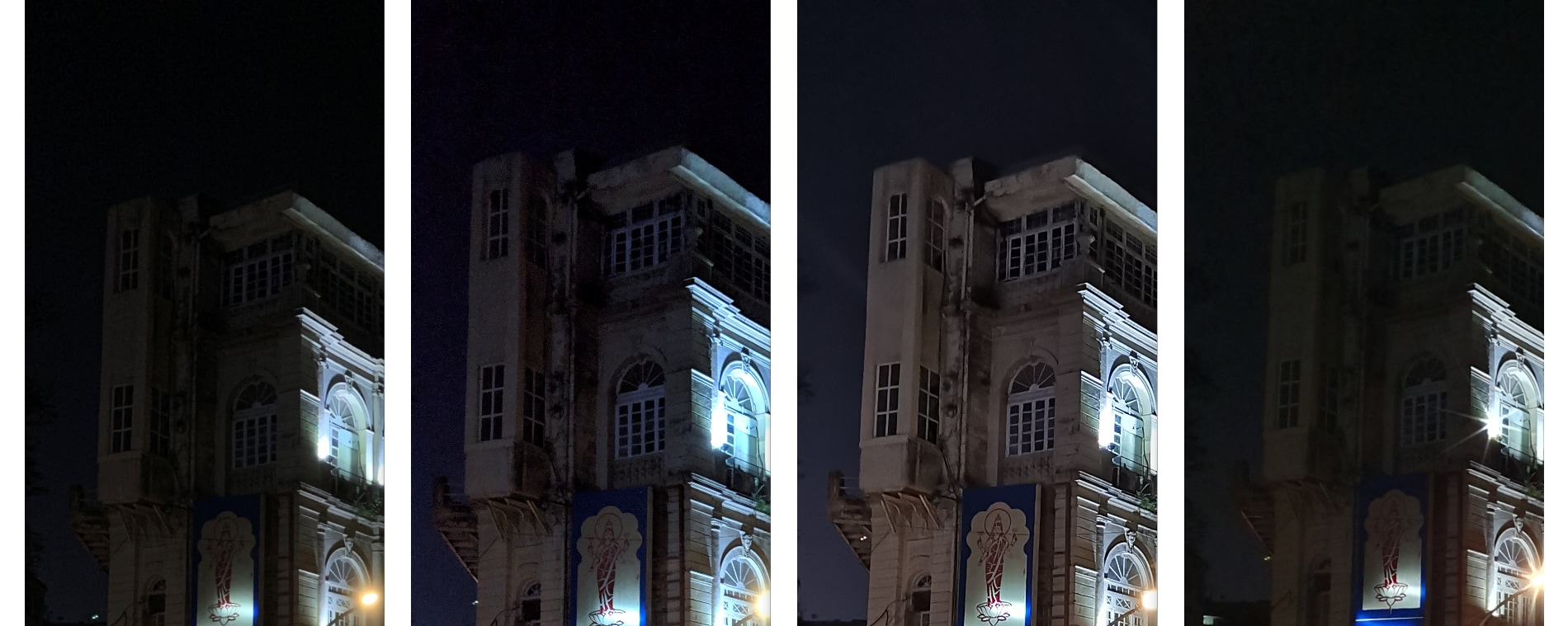
L to R: iPhone XR, Pixel 3 XL, Mate 20 Pro, Galaxy S10 Plus. Image: Tech2/ Sheldon Pinto
The Pixel 3 XL and the Mate 20 Pro came out on top with brighter photos showcasing more detail. The Mate 20 Pro, as always, delivered a sharper photo but with less noise than the Pixel. Overall, the Pixel still clicks the best night mode shots with minimal blur in dark lighting scenarios.
Night Video: Apple iPhone XR
After walking around Horniman Circle I finally reached the Asiatic Library (or The Asiatic Society with the State Library), which has always been a well-lit landmark in Mumbai.
Under the street lighting, I decided to try out shoot some video.
The playlist below shows the videos shot using the iPhone XR, Pixel 3 XL, Mate 20 Pro and the Galaxy S10 Plus.
[youtube https://www.youtube.com/watch?v=videoseries?list=PLFZEHifMBLl4uYuhw4XjdAaqvZDg_7Umq]
While all four smartphones could not capture great video, the iPhone XR's shot was steady and delivered steady frame rates and delivered usable footage with relatively low noise. The next best video came from the Google Pixel 3 XL that managed to maintain focus and steady frame rates and was also surprisingly low on noise.
The Samsung Galaxy S10 Plus’ video was loaded with noise. The video also came out a bit jittery.
Footage shot on the Mate 20 Pro looked like it came from an entry-level smartphone. Huawei really needs to work with delivering better video quality on its smartphones!
Food: Huawei Mate 20 Pro
After all that shooting I decided to drop by at the nearby Starbucks to grab something to drink and eat as I was starving.
There was a slice of chicken quiche on my table, making it the perfect subject and a good test, given the dim lighting.

L to R: iPhone XR, Pixel 3 XL, Mate 20 Pro, Galaxy S10 Plus. Image: Tech2/ Sheldon Pinto

L to R: iPhone XR, Pixel 3 XL, Mate 20 Pro, Galaxy S10 Plus. Image: Tech2/ Sheldon Pinto
The iPhone XR failed miserably and showcased a dull photo that would make someone throw up. To make things worse, it cannot shoot objects in Portrait mode (humans only) so it couldn't produce a depth effect, making the delicious quiche look very boring. The more expensive XS and XS Max would have managed to do this.
The Mate 20 Pro did a fine job here and it also got the edge detection right with the whole slice in focus. The Google Pixel was the next best thing and Samsung was in third place with only an area of the slice in focus.
You can check out all the camera samples in this comparison in our Flickr album by clicking here.
Verdict
At the end of it all. Every phone has its strengths.
The Apple iPhone XR is the true all-rounder here with consistent performance whether you are shooting photos or video. It also delivers more natural looking colours that are true to the scene.
The Google Pixel 3 XL is the star photographer with unbeatable portrait photos, amazing low light photos and average video shooting capabilities.
The Samsung Galaxy S10 packs in some amazing video stabilisation (Super Steady video in Daylight) that is unheard of in smartphones, its low light photo capabilities are not bad either. It’s just that they cannot match up when compared to an iPhone XR or a Pixel 3 XL when it comes to quality.
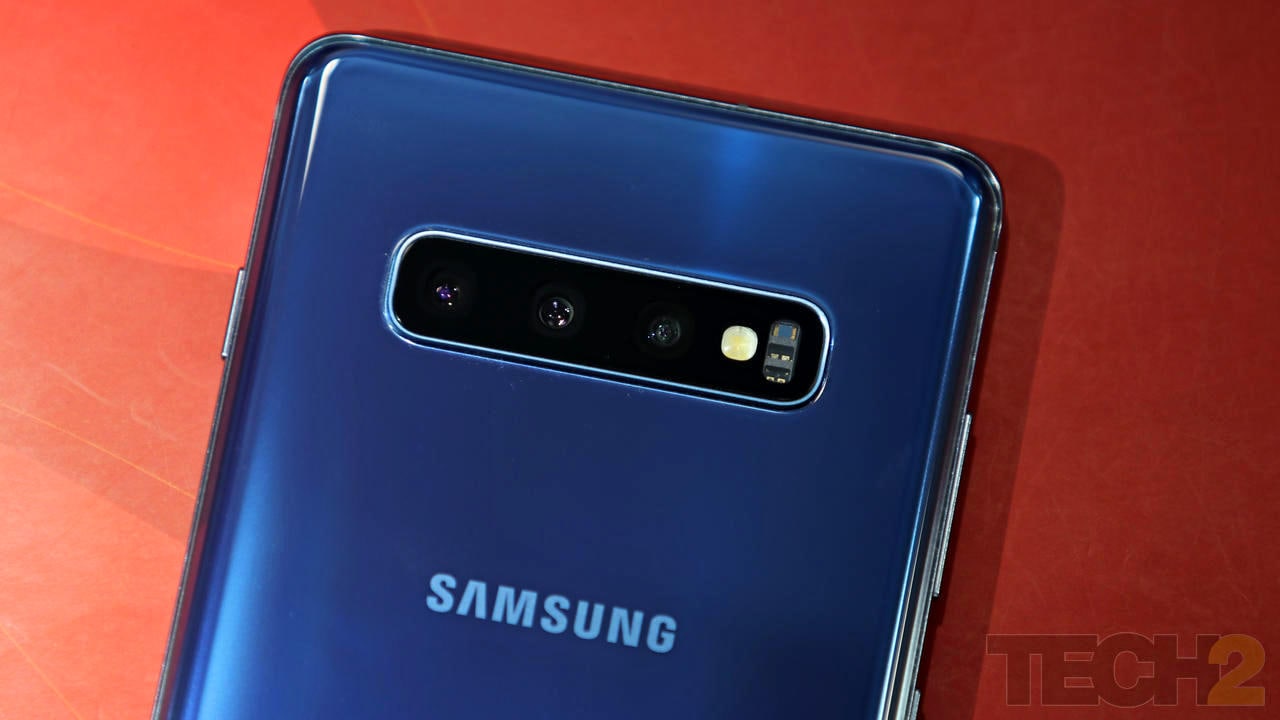
There's plenty of cameras to choose from this time. Image: Tech2/ Omkar Patne
The Mate 20 Pro shoots noise-free low light photos and can get you closer to the action than any other smartphone (be it macro or zoom), and it even offers the best ultra-wide shots on a smartphone. It does need plenty of work when it comes to video.
This comparison also highlights how artificial or synthetic photos have become since the past year. Most of us would choose the artificially enhanced images of the Pixel over the more natural tones of the iPhone. Indeed, it boils downs to personal choice.
If you are an iOS user there’s really not much of a choice but to accept the iPhone XR in this price range. On the Android side of things, I’d pick the Google Pixel 3 XL as the Samsung Galaxy S10 Plus and Mate 20 Pro somehow cannot match up to the Pixel's camera.
If the camera is not the only thing that matters to you, do check out my review of the Samsung Galaxy S10 Plus.
Tech2 is now on WhatsApp. For all the buzz on the latest tech and science, sign up for our WhatsApp services. Just go to Tech2.com/Whatsapp and hit the Subscribe button.
Source
No comments: